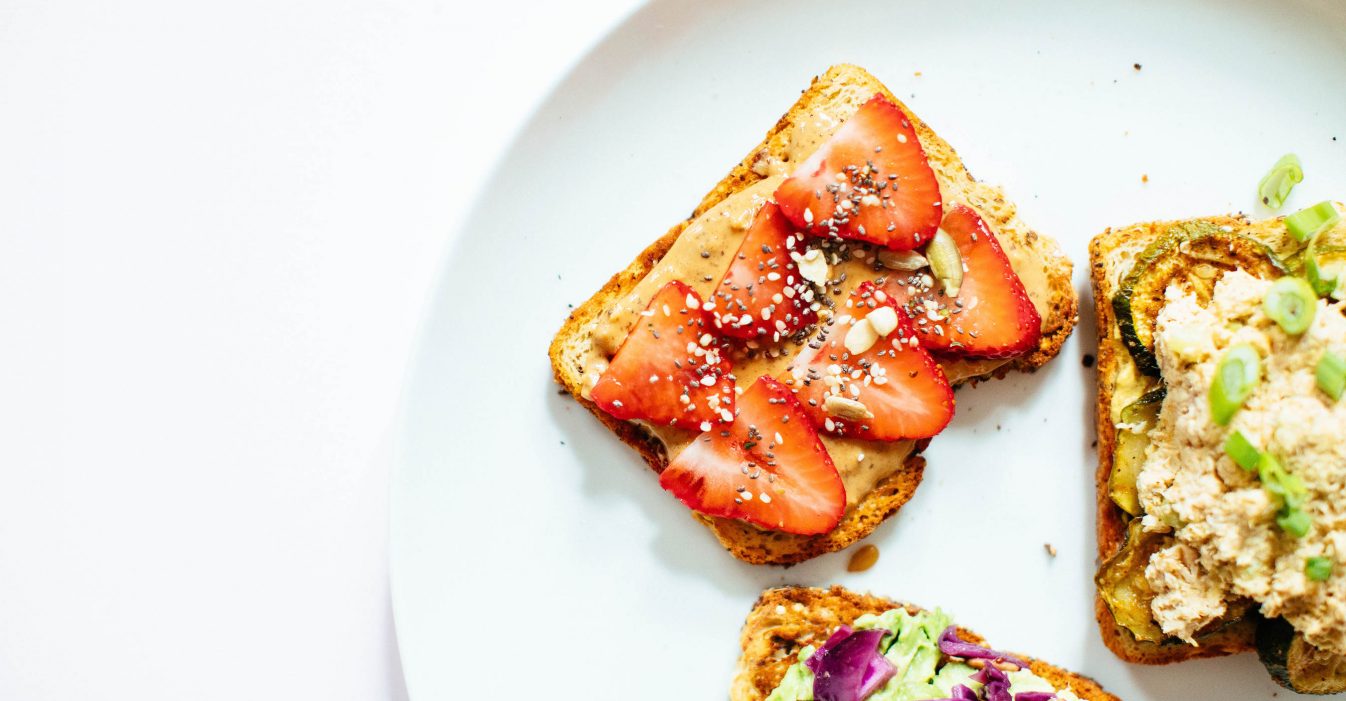Healthy fats, also known as dietary fats play such a vital role in our health — but there’s a lot of confusion around them.
Many people believe they should maintain a low-fat diet and others aren’t quite sure where to find healthy fats or how much they should consume.
Out of all the macronutrients, people have the most misconceptions about fat!
Discover why healthy fats are so important to include in your meals and a few whole food, plant-based sources you can use when preparing a dish.
Why You Need Healthy Fat In Your Diet
Fats are important for cellular and hormonal health, and unlike carbohydrates and protein, fats also provide our bodies with a layer of protection, literally insulating our organs and also helping keep a normal body core temperature.
Fats also help us digest important fat-soluble vitamins such as vitamins A, D, E, and K that keep our brains, cells, hormones, tissues, hair, skin, and nails healthy.
Fat provides the structural component to many cell membranes which are essential for cellular development and carrying various messages through our body quickly via hormones.
Fat also acts as a slower release source of energy for our bodies. Think of fat as being a reserve or our long-term source of energy that sticks around the longest.
It’s also what helps keep you fuller longer because it takes longer to digest. Eating fats with each meal can support hormones related to your hunger, for example, eating omega-3 fats can help lower fasting insulin levels, and eating fat releases CCK or cholecystokinin which is a satiety hormone made in your gut.
Have you ever made a salad yourself with just lettuce and low-fat dressing and a few hours later you were starving, but when you make a salad as an entree with lots of foods like protein, other veggies, and dressing and you’re nice and full?
That’s because those entree salads usually include all five elements of the foundational five (protein, healthy fats, the flavor factor, and both non starchy and starchy carbohydrates) including a delicious olive oil dressing.
Those are just a few of the reasons healthy fats are so important to eat on a daily basis.
Two Types of Fat To Understand
There are two types of fats to know about.
There are two basic kinds of fat, saturated and unsaturated.
Unsaturated — Aka “Healthy Fat”
Unsaturated fats are considered “healthy fats” including both polyunsaturated and monounsaturated fats.
These types of fats are typically found in vegetable oils that are liquid at room temperature, fatty fish, (salmon, trout, catfish, mackerel), and nuts and seeds.
Polyunsaturated Fats
Polyunsaturated fats include Omega-3’s that are the building blocks of cell membranes I mentioned earlier. Omega-3’s also give your body energy, help support your hormones, brain health, and immune health.
Wild-caught salmon, olive oil, avocados, walnuts, flaxseeds, chia seeds and hemp seeds are packed with omega-3 fatty acids.
Ideally, it’s best to get omega-3 fatty acids from fish sources that contain better converting and more bioavailable forms of DHA and EPA.
Plant-based omega-3 rich foods like flax seeds, chia seeds, and hemp seeds must be converted in the body from ALA to DHA and EPA, that conversion doesn’t yield optimal levels of omega-3 compared to food sources like salmon, mackerel, and other fish.
Monounsaturated Fats
Monounsaturated fats are considered a healthy fat that is also a good source of vitamin E.
Monounsaturated fats include olives, avocados, hazelnuts, almonds, Brazil nuts, cashews, sesame seeds, pumpkin seeds, and olive oil.
Saturated Fat
Saturated fats are typically what are considered “unhealthy fats” and include animal fats (meat, poultry, dairy) and plant oils that are solid at room temperatures like coconut and palm oil.
But there’s more research changing every day about the debate on saturated fats and whether or not long-term, they negatively impact cardiovascular health.
Whenever I mention coconut oil as a healthy fat I always get the reaction of “But McKel, that’s saturated fat!” It sure is. Coconut oil is about 90% saturated fat. So why do I personally use and recommend this oil in cooking?
The type of fatty acids that make up coconut oil’s saturated fat content is medium-chain triglycerides (MCT) and are about 65% of its fat content.
Unlike long-chain fatty acids (the majority of fats in our diet) which must go through modification prior to being digested and absorbed in our bodies, medium-chain triglycerides are passively diffused from our gastrointestinal tract to the portal system.
In other words, our bodies find it super easy to break down the fat before getting rapidly absorbed and used for energy by the body.
How Much Healthy Fat Should I Eat in a Day?
By now, I’m sure you may be wondering, ok, I know why I need healthy fats and where to get them, but how much should I include in my day?
This is one of the most popular questions I get asked and this is something that I cover in much more detail inside of my membership.
The exact amount depends on your lifestyle, your health and fitness goals, your digestion, activity level, and genetics.
But a general rule of thumb is that a serving of healthy fats is about 1 tablespoon or one ounce, which is roughly the length of your thumb for a quick visual.
If you get healthy fats at every meal and use that serving size as a rule of thumb to find your unique portion size by checking in with your hunger and satiety, then that’s a great place to start. I teach more about learning your portion sizes in my Method Membership too!
Put this Into Practice
Healthy fats are part of a balanced diet. If you find yourself overwhelmed by nutrition and want to make sure you’re eating a balanced diet every day, sign up for my Eating Well Made Easy with the Foundational Five Course.

Sources:
- “Fat-Soluble Vitamins”. Diet and Health: Implications for Reducing Chronic Disease Risk. https://www.ncbi.nlm.nih.gov/books/NBK218749/
- “Fat digestion in the stomach: stability of lingual lipase in the gastric environment.” https://www.ncbi.nlm.nih.gov/pubmed/6427744
- “Omega-3 Fatty Acids”. https://ods.od.nih.gov/factsheets/Omega3FattyAcids-Consumer/







